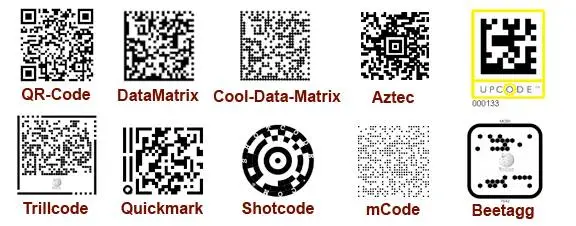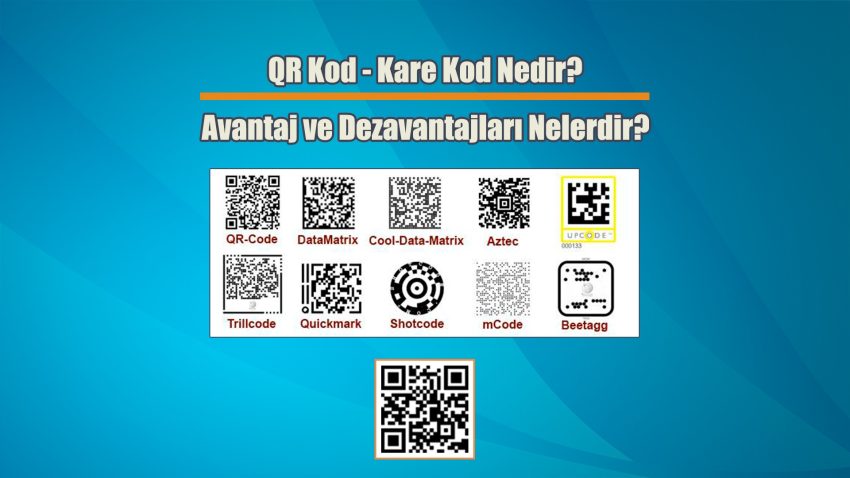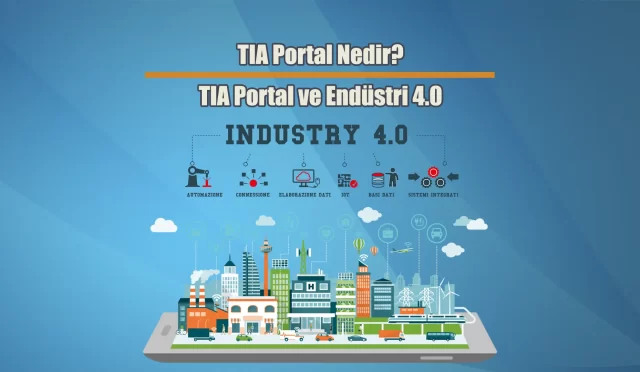QR code (Quick Response Code) or QR code is a two-dimensional barcode system. It consists of a regular arrangement of black and white squares in a square matrix. QR codes are an optical barcode system that can be read by mobile devices. QR codes can be used on product labels, business cards, websites and many other places.
QR codes can be read quickly and accurately when properly encoded. These codes are a versatile tool that can store a lot of information. QR codes can be used to create links to websites, phone numbers, addresses and other information. They may also include product serial numbers and stock information.
QR codes can store more information and be read faster than traditional barcode systems. Therefore, many businesses and organizations use QR codes on their products or events.
İçindekiler
QR Code – What is QR Code?
The origin of QR codes and QR codes began in Japan in the 1990s. The Japanese automotive industry needed a two-dimensional barcode system to manage information more efficiently in its production processes.
Based on this need, Denso Wave, a Toyota subsidiary company, developed QR codes. QR codes quickly became popular due to their ability to be read quickly and accurately and store more information.
QR codes were developed before QR codes. In 1974, an American food chain started using barcodes to more easily manage the inventory of their products. These barcode systems consisted of straight-lined bars and were a one-dimensional barcode system.
In the 1980s, two-dimensional barcode systems were developed that could store more information that could be placed on the labels of products. Among these systems were QR codes. QR codes are less commonly used today as they can store less information than QR codes.
Today, QR codes and QR codes are used in many different industries. QR codes are widely used, especially in the retail, logistics, healthcare and event management industries.
QR Code – Why is QR Code Used?
QR codes and QR codes are used for many reasons. Here are some of them:
Information storage: QR codes and QR codes are placed on product labels or other materials, allowing more information to be stored. This information may include websites, phone numbers, e-mail addresses, addresses, serial numbers, stock information, etc.
Quick reading: QR codes and QR codes are an optical barcode system. So, to read a QR code or QR code, simply point your mobile device’s camera at the code quickly. This provides a faster and easier access to information.
Mobile device compatibility: QR codes and QR codes are compatible with mobile devices. Therefore, you do not need a special device to read QR codes or QR codes. Using just a smartphone or tablet, you can read the code.
Cost-effectiveness: QR codes and QR codes are less expensive than traditional barcode systems. Therefore, businesses and organizations can offer more information at a more affordable cost by using QR codes or QR codes on their products or events.
Versatility: QR codes and QR codes can be used in many different industries. In particular, they are widely used in the retail, logistics, healthcare and event management industries. These codes are a versatile tool that can be used for different purposes.
Why is QR Code Used?
QR codes are a two-dimensional barcode system that is printed on products or materials. This system can store more information and can be read faster than straight-line barcode systems. Here are some reasons why QR codes are used:
Product tracking: QR codes can be used to track a product. It can contain a product’s QR code, serial number, date of manufacture, sale price, and other information. This information helps manage the inventory of products and allows products to be tracked during the sales process.
Marketing: QR codes can be used in marketing campaigns. A QR code can lead to a website, a video, or a coupon code. This gives consumers access to more information and can influence their purchasing decisions.
Event management: QR codes can be used in event management. QR codes of people who have registered to attend an event can be used to check registration during the event. This saves event organizers time in the registration process and enables more efficient registration management during the event.
Payment systems: QR codes can be used in mobile payment systems. These systems allow a user to pay using their mobile device. A QR code can point to a payment system and enable a user to pay.
Logistics: QR codes can be used in the logistics industry. A QR code can track a package and help identify where a package is and when it will be delivered. This gives logistics companies greater efficiency in their business processes.
Authentication: QR codes can be used for authentication. For example, a person’s passport or ID card may have a QR code, which can be used to verify the person’s identity.
Art: QR codes can be used on artwork. Artists can invite viewers to a different experience by placing QR codes on their works. For example, a QR code can lead to a website to learn more about a piece of art.
The days of purchases where QR codes are used are increasing and developing.

QR codes can be generated in many different ways. One of the most common methods is to use a barcode generator program that uses special software to generate the QR code. Here are the steps for generating QR codes:
Download or purchase barcode generation software.
Enter the required information to generate the QR code. This is done to determine the data and dimensions that the QR code will contain.
Generate QR code. This is done by choosing a specific code format of the software.
Press QR code. The QR code can be printed using a printer.
Alternatively, online barcode generator sites can be used to generate a QR code. These sites allow users to easily generate QR codes. Users fill out a form to generate the QR code by entering the information that the QR code will contain. They can then download and print the QR code.
QR codes are also created by professional barcode manufacturers.
What are the Advantages and Disadvantages of QR Code?
QR codes bring many advantages and disadvantages. Here are the advantages and disadvantages of QR codes:
Advantages:
Quick and easy to read: QR codes are known for their fast and easy readability. This allows a user to instantly know about the product or other information by reading a QR code.
Space saving: QR codes can store a lot of information in a small space. This ensures that all the information of a product or an event is collected in a single QR code.
Error correction feature: QR codes have error correction feature. This allows the QR code to be read even if part of it is damaged.
Eco-friendly: QR codes offer an eco-friendly option by reducing paper usage. Many products reduce paper usage by using QR code labels.
Integration: QR codes can be easily integrated into digital systems. This can be used to redirect a QR code to a website or other digital platform.
Disadvantages:
Dependency: QR codes require a mobile device or reader. This can cause problems if users are unable to read or use QR codes.
Requires a smooth reading surface: A smooth reading surface is required for smooth reading of QR codes. If the QR code is damaged or scratched, it may become difficult to read.
Privacy: QR codes may cause users’ information to be used by third parties. Especially when used for marketing purposes, users may encounter advertisements or other offers against their will.
Language issue: QR codes can only show information written in a specific language. This can be a disadvantage for international use.
Adaptation to new technology: Some users may have to adapt to new technologies to use QR codes. This may require a training or learning curve.
QR codes bring many advantages and disadvantages. However, in general QR codes offer a fast, easy and environmentally friendly option.





